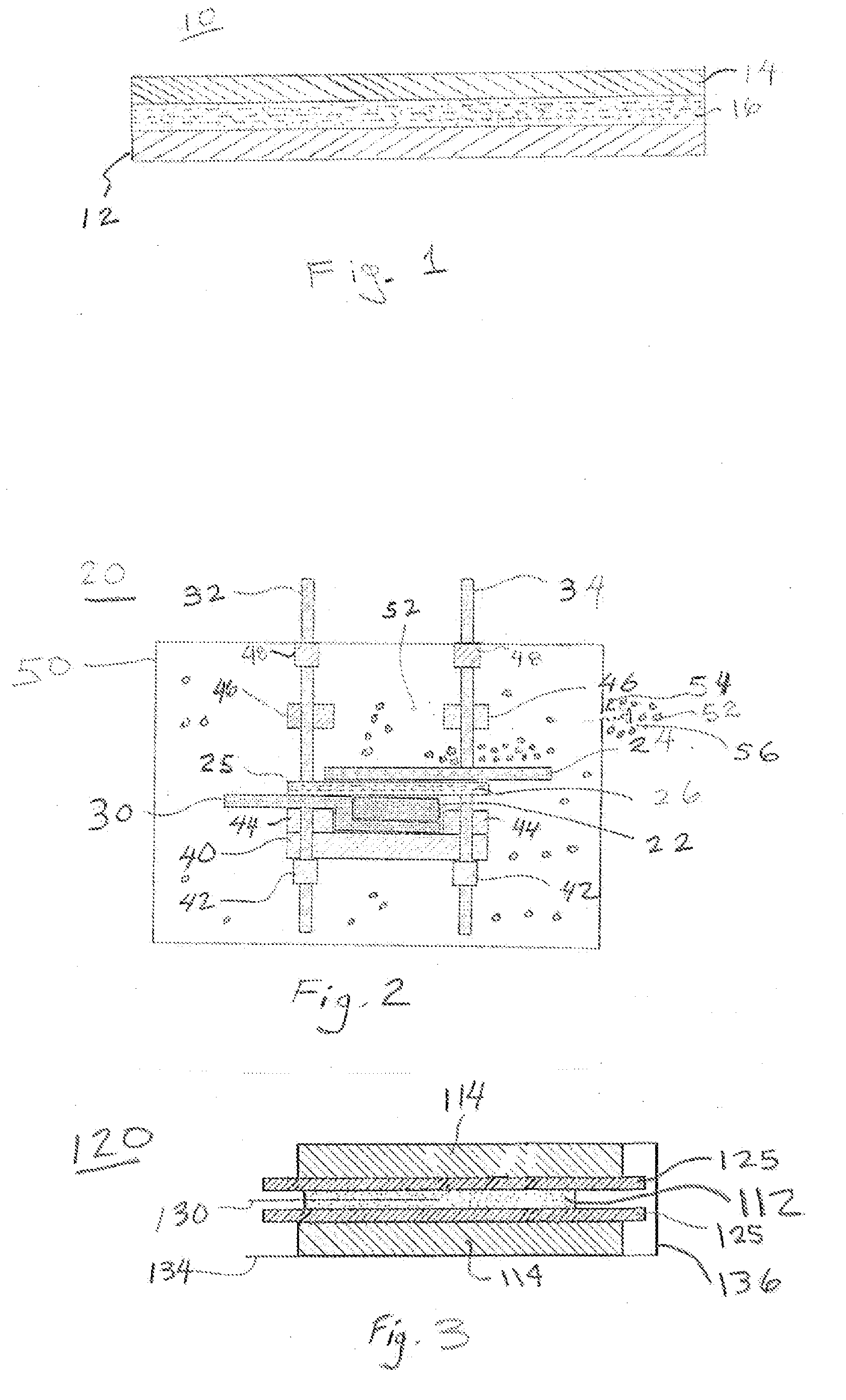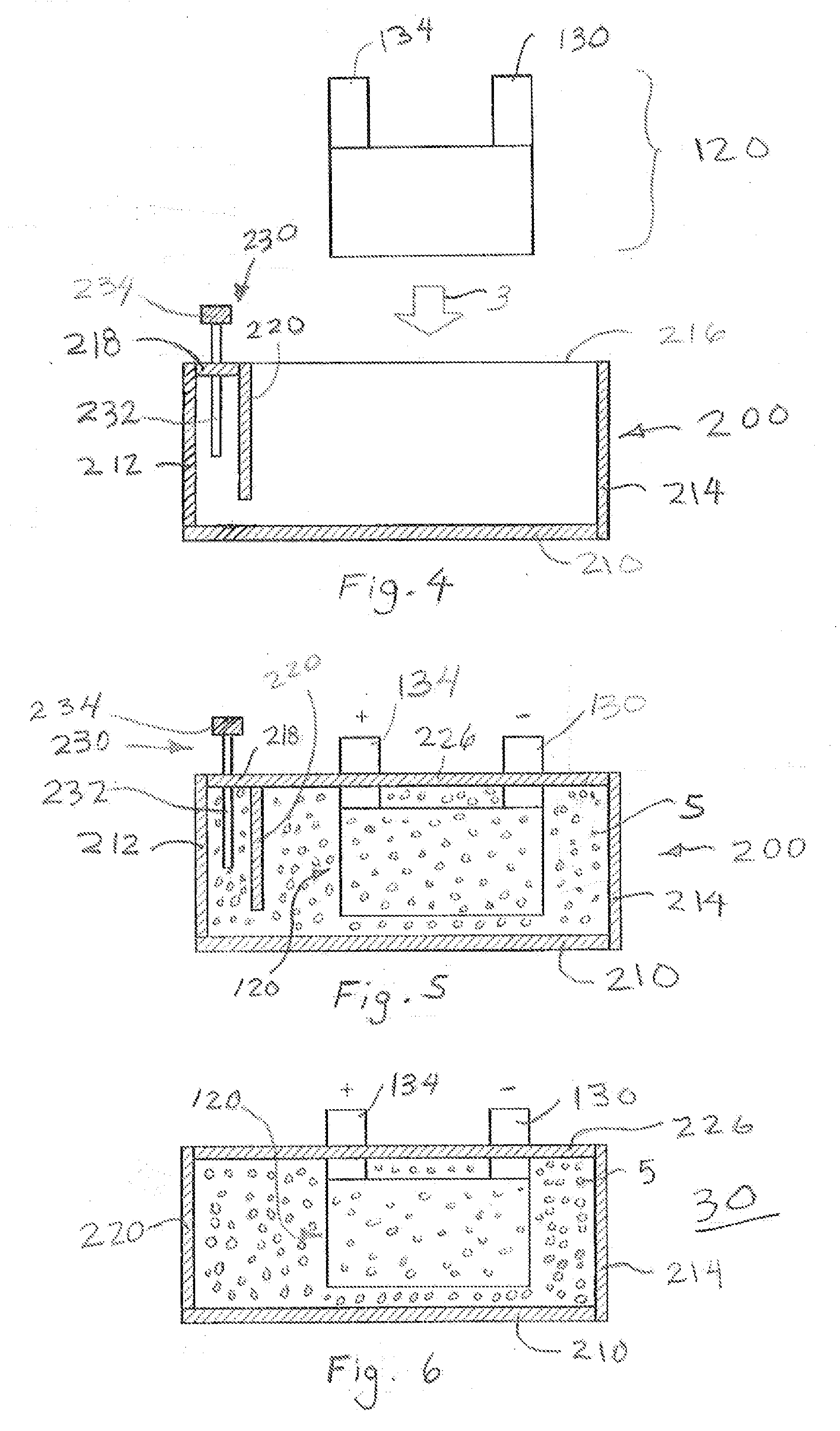Rechargeable Lithium Air Battery Cell Having Electrolyte with Alkylene Additive
a lithium air battery cell and additive technology, applied in the direction of non-aqueous electrolyte cells, cell components, electrochemical generators, etc., can solve the problems of depleting the cell, difficult to return the reactants to their original state, pre-use state, and difficult to recharge multiple times
- Summary
- Abstract
- Description
- Claims
- Application Information
AI Technical Summary
Problems solved by technology
Method used
Image
Examples
example of
Production of Battery Cell
[0048]The following is an example of the production of a cell incorporating teachings of the invention. It should be understood, however, that the invention is not limited to the specific details set forth in the example. Parts and percentages set forth herein are by weight unless otherwise specified.
[0049]Anode and Air Cathode: General Construction and Materials—Suitable anode materials include but are not limited to lithium metal; lithium-metal-based alloys (for example, Li—Al, Li—Sn, and Li—Si); lithium-intercalating compounds that are typically used in Lithium-ion batteries such as but not limited to graphite, mesocarbon microbead (MCMB) carbon, soft carbon; and lithium titanate, which also frequently is used in lithium-ion batteries.
[0050]As practiced by the invention, a typical reversible air cathode initially contains about 14% lithium peroxide (Li2O2); however, the cell will operate effectively if the air cathode contains from about 0.5% to about 50...
PUM
 Login to View More
Login to View More Abstract
Description
Claims
Application Information
 Login to View More
Login to View More - R&D
- Intellectual Property
- Life Sciences
- Materials
- Tech Scout
- Unparalleled Data Quality
- Higher Quality Content
- 60% Fewer Hallucinations
Browse by: Latest US Patents, China's latest patents, Technical Efficacy Thesaurus, Application Domain, Technology Topic, Popular Technical Reports.
© 2025 PatSnap. All rights reserved.Legal|Privacy policy|Modern Slavery Act Transparency Statement|Sitemap|About US| Contact US: help@patsnap.com



